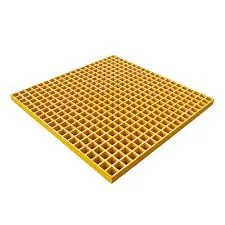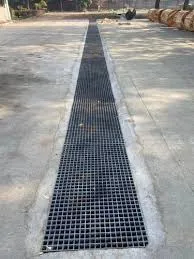
-
 Afrikaans
Afrikaans -
 Albanian
Albanian -
 Amharic
Amharic -
 Arabic
Arabic -
 Armenian
Armenian -
 Azerbaijani
Azerbaijani -
 Basque
Basque -
 Belarusian
Belarusian -
 Bengali
Bengali -
 Bosnian
Bosnian -
 Bulgarian
Bulgarian -
 Catalan
Catalan -
 Cebuano
Cebuano -
 China
China -
 China (Taiwan)
China (Taiwan) -
 Corsican
Corsican -
 Croatian
Croatian -
 Czech
Czech -
 Danish
Danish -
 Dutch
Dutch -
 English
English -
 Esperanto
Esperanto -
 Estonian
Estonian -
 Finnish
Finnish -
 French
French -
 Frisian
Frisian -
 Galician
Galician -
 Georgian
Georgian -
 German
German -
 Greek
Greek -
 Gujarati
Gujarati -
 Haitian Creole
Haitian Creole -
 hausa
hausa -
 hawaiian
hawaiian -
 Hebrew
Hebrew -
 Hindi
Hindi -
 Miao
Miao -
 Hungarian
Hungarian -
 Icelandic
Icelandic -
 igbo
igbo -
 Indonesian
Indonesian -
 irish
irish -
 Italian
Italian -
 Japanese
Japanese -
 Javanese
Javanese -
 Kannada
Kannada -
 kazakh
kazakh -
 Khmer
Khmer -
 Rwandese
Rwandese -
 Korean
Korean -
 Kurdish
Kurdish -
 Kyrgyz
Kyrgyz -
 Lao
Lao -
 Latin
Latin -
 Latvian
Latvian -
 Lithuanian
Lithuanian -
 Luxembourgish
Luxembourgish -
 Macedonian
Macedonian -
 Malgashi
Malgashi -
 Malay
Malay -
 Malayalam
Malayalam -
 Maltese
Maltese -
 Maori
Maori -
 Marathi
Marathi -
 Mongolian
Mongolian -
 Myanmar
Myanmar -
 Nepali
Nepali -
 Norwegian
Norwegian -
 Norwegian
Norwegian -
 Occitan
Occitan -
 Pashto
Pashto -
 Persian
Persian -
 Polish
Polish -
 Portuguese
Portuguese -
 Punjabi
Punjabi -
 Romanian
Romanian -
 Russian
Russian -
 Samoan
Samoan -
 Scottish Gaelic
Scottish Gaelic -
 Serbian
Serbian -
 Sesotho
Sesotho -
 Shona
Shona -
 Sindhi
Sindhi -
 Sinhala
Sinhala -
 Slovak
Slovak -
 Slovenian
Slovenian -
 Somali
Somali -
 Spanish
Spanish -
 Sundanese
Sundanese -
 Swahili
Swahili -
 Swedish
Swedish -
 Tagalog
Tagalog -
 Tajik
Tajik -
 Tamil
Tamil -
 Tatar
Tatar -
 Telugu
Telugu -
 Thai
Thai -
 Turkish
Turkish -
 Turkmen
Turkmen -
 Ukrainian
Ukrainian -
 Urdu
Urdu -
 Uighur
Uighur -
 Uzbek
Uzbek -
 Vietnamese
Vietnamese -
 Welsh
Welsh -
 Bantu
Bantu -
 Yiddish
Yiddish -
 Yoruba
Yoruba -
 Zulu
Zulu
GRP, Fiberglass & FRP Products for Thermal & Nuclear Power Plants Durable Solutions
- Market growth statistics and performance data
- Technical superiority of composite materials
- Leading manufacturer comparisons
- Custom engineering solutions
- Field application case studies
- Quality certification standards
- Future innovations in power generation

(grp products for thermal and nuclear power)
The Critical Role of GRP Products in Thermal and Nuclear Power
Industrial power generation facilities increasingly rely on Glass Reinforced Plastic solutions to overcome extreme operational challenges. With nuclear plants requiring 30% longer service lifetimes than conventional structures, composites have become essential across cooling systems, containment units, and radiation shielding. Industry analyses project the global market for fiberglass products in power generation will reach $3.2 billion by 2027, growing at 6.8% CAGR. Operators report 63% reduction in maintenance costs after switching from metallic alternatives. The non-conductive nature of FRP prevents galvanic corrosion common in coastal thermal plants where standard materials fail within 5-7 years.
Technical Advantages Over Traditional Materials
Fiber-reinforced polymers demonstrate unparalleled physical properties critical for power applications. GRP withstands continuous exposure to 180°C steam without deformation - outperforming carbon steel which weakens above 120°C. Testing confirms radiation shielding effectiveness at 96.3% neutron attenuation in 20mm thick sections. When reactor water treatment systems require pH levels between 1.5-12.5, specialized vinyl ester laminates maintain structural integrity where metals corrode. The material's dielectric strength (>30kV/mm) prevents short circuits in electrical switchyards, while 0.06 Bu/(hr·ft²·°F) thermal conductivity insulates piping better than polyurethane foam.
Leading Manufacturer Comparison
| Manufacturer | Max Temp Rating | Pressure Capacity | Radiation Tolerance | Certifications |
|---|---|---|---|---|
| Composite Solutions Inc | 205°C | 25 bar | 97 kGy | ASME RTP-1, NQA-1 |
| Advanced FRP Systems | 195°C | 32 bar | 85 kGy | ASTM D5367, ISO 14692 |
| PowerPlant Composites | 225°C | 28 bar | 110 kGy | NUPIC, ASME III Div.1 |
Third-party validation reveals performance variations between producers. Accelerated aging tests show 25% thickness degradation difference across brands after 10,000 radiation exposure hours. Manufacturers with NUPIC certification demonstrate 12% greater mean-time-between-failure in safety-related systems.
Customized Engineering Approaches
Engineering teams develop application-specific laminates using computational fluid dynamics and finite element analysis. A Saudi Arabian combined-cycle plant required custom resin formulations to handle 15.8% sulfuric acid concentration at 95°C. The solution used dual-layer construction: corrosion-resistant veil surface with structural ECR-glass reinforcement, increasing service life from 3 years to 15+. Modular assembly techniques enable installation during planned outages, as demonstrated when a German utility replaced 800m of condenser water boxes in just 34 days using prefabricated FRP sections.
Proven Installation Case Studies
Following Fukushima guidelines, a Taiwanese nuclear facility installed boron-infused neutron shielding walls maintaining 15.7cm equivalence in 9.2cm thickness. Post-installation surveys confirmed 43% weight reduction versus lead alternatives. In Wyoming coal plants, fly ash handling systems transitioned from alloy 316L ($480/m) to filament-wound FRP ($220/m), eliminating 17 annual repair incidents. Field inspectors report zero degradation in resin transfer molded cooling tower fill packs after 11 years - exceeding the 7-year guarantee. Such results prove why 43 US plants now specify composite solutions for critical upgrades.
Quality Assurance Protocols
Nuclear-grade GRP undergoes rigorous validation beyond ASTM standards. Material traceability requires resin batch documentation down to catalyst percentages. Each laminate section undergoes ultrasonic scanning for density uniformity before gamma radiography verifies layer integrity. ASME Section X mandates hydrotesting at 150% operating pressure for containment applications. Third-party labs conduct accelerated corrosion testing under ASTM C581 protocols where samples endure 10,000 hours in simulated reactor water environments before certification.
Why GRP Solutions are Indispensable for Thermal and Nuclear Power Facilities
Continuous innovation propels GRP technology as modern plants target 60-year operational lifespans. Nano-engineered ceramic-polymer hybrid resins now withstand 325°C temperatures for next-gen supercritical plants. The IAEA's 2022 regulatory guide endorses composites for safety-related structures after confirming their performance during seismic events through shake table testing. These advancements position fiberglass products as foundational elements for tomorrow's power infrastructure - delivering unparalleled safety margins while reducing lifetime costs by 41-67% compared to traditional materials. Forward-thinking operators increasingly standardize FRP specifications to secure these advantages.

(grp products for thermal and nuclear power)
FAQS on grp products for thermal and nuclear power
Q: What are the key applications of GRP products in thermal and nuclear power plants?
A: GRP products are widely used for corrosion-resistant piping systems, cooling tower components, and electrical insulation panels. Their durability in high-temperature and radiation environments makes them ideal for critical infrastructure.Q: How do fiberglass products enhance safety in nuclear power facilities?
A: Fiberglass products provide non-conductive, fire-retardant solutions for cable trays, containment structures, and radiation shielding. They meet stringent safety standards while resisting chemical degradation in harsh operational conditions.Q: What advantages do FRP products offer over traditional materials in thermal power plants?
A: FRP products offer lightweight construction, superior corrosion resistance, and reduced maintenance costs compared to steel or concrete. They excel in applications like flue gas desulfurization systems and water treatment units.Q: Are GRP products compliant with nuclear industry regulations?
A: Yes, GRP products for nuclear power undergo rigorous testing to comply with ASME NQA-1 and IEC standards. They are engineered to withstand extreme pressures, temperatures, and radiation exposure while maintaining structural integrity.Q: Can FRP solutions withstand high radiation levels in nuclear reactors?
A: Specially formulated FRP composites retain mechanical properties under prolonged radiation exposure. They are used for reactor core components, waste storage systems, and radiation shielding due to their stability and longevity.Latest news
-
Fiberglass Storage Tanks Durable & Corrosion-Resistant FRP SolutionsNewsJun.03,2025
-
Fiberglass Dual Lamination Products Durable GRP SolutionsNewsJun.03,2025
-
GRP Playground Equipment Durable FRP & Fiberglass Play StructuresNewsJun.03,2025
-
Molded Fiberglass Grating Durable & Corrosion-Resistant SolutionsNewsJun.01,2025
-
Rock Drilling Tools for Tunnels Heavy-Duty Specially-Designed SolutionsNewsJun.01,2025
-
GRP, Fiberglass & FRP Products for Thermal & Nuclear Power Plants Durable SolutionsNewsJun.01,2025









